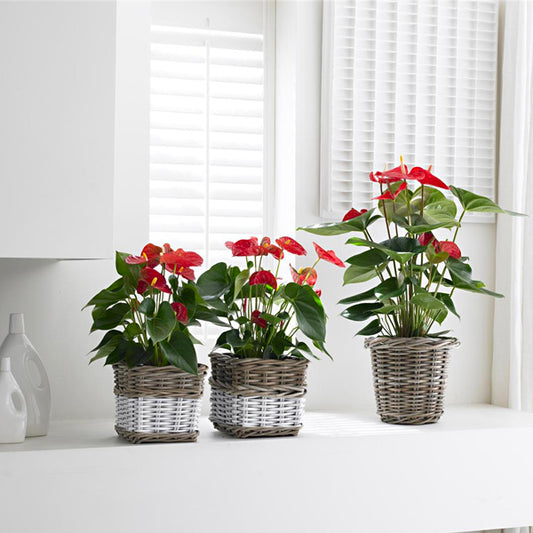Epidendrums are very easy to grow plants and can blooms several times in a year. These plants are amazingly adapted to a variety of conditions and are available in a wide range of colours. They should not be moved around once they find a space they love. Moving the plant around can cause a sudden decline in their health.

Tip: Cutting off the spent flower stems will instigate the plant to bloom again in and about two months.
LIGHT
Epidendrums will enjoy bright in-direct light provided they are introduced to it gradually. In the tropics where strong light is associated with heat, plants that are kept in the open can suffer burns when the sun comes out after the monsoons. Ideally, Epidendrums do well under nets allowing 50-60% sunlight to pass through. Plants receiving lesser amounts of light have leaves that are dark green and flowering will be markedly reduced. Ensure that your plants are protected from the afternoon sun especially during the summer. For those who do not have greenhouses, east or west facing balcony which receives a few hours of sunlight would be ideal. Provide the plants good air circulation at all times.
WATER
Watering as described in our earlier blog watering orchids, can be determined by few things.
Epidendrum orchids will enjoy regular watering during the warmer months and less frequently during the cooler months. It is observed that withholding the watering for a longer period like over a week or so can encourage bud growth. However, make sure the plants are happy and aren’t dehydrated.
TEMPERATURE
Epidendrum orchids enjoy day temperature of 28-32C and night temperature of 21-22C. They can sustain much higher temperatures too! Epidendrums will bloom happily throughout the year irrespective of a temperature differential between day and night.
HUMIDITY
Epidendrum orchids enjoy humidity of 50-80% RH throughout year. Where humidity levels are quite high, no additional setup is necessary. Hobbyists in other regions will either need to setup misting in their greenhouses or place humidity trays beneath their orchids after ensuring that water from the trays does not enter the pots.
POTTING AND FERTILIZER
Plants may also be grown in small pots or baskets filled with an open, fast draining medium like Pine bark that allows the roots to dry rapidly after watering. Repotting or dividing should be done only when new root growth is just starting. This allows the plant to become established in the shortest possible time with the least amount of stress.
Adult plants can be fertilized using a balanced fertilizer like HighGrow fertilizer along with micronutrients or all-in-one fertilizer like Speciality Bio 20 and once a month using HighBloom fertilizer. Remember to give your plants enough light when you use a high nitrogen fertilizer to prevent rot.

